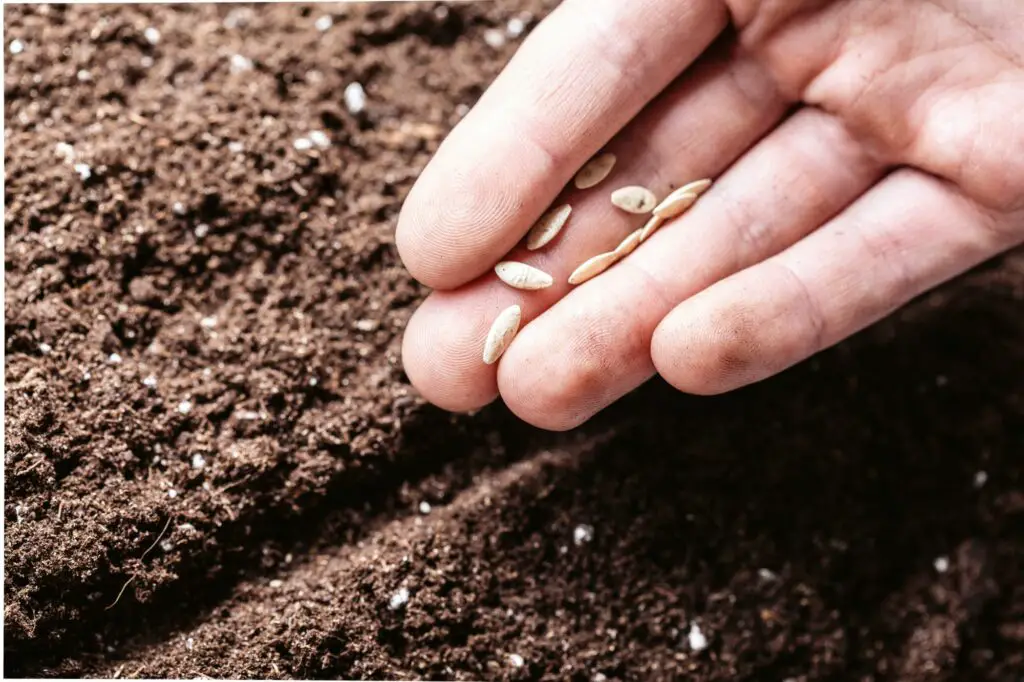Maine is known for its beautiful landscapes, and a lush green lawn is undoubtedly a part of it. Planting grass seed in Maine is not as simple as it may seem, and timing is crucial for a successful outcome.
Understanding the climate, choosing the right grass seed, and preparing the soil are some of the essential factors to consider before planting grass seed.
Maine’s climate is characterized by long winters and short summers. The state experiences cold and snowy winters, and the ground remains frozen for an extended period.
The best time to plant grass seed in Maine is during late summer and early fall, from mid-August to mid-September. During this time, the soil is warm, and temperatures are cooler, which creates an ideal environment for seed germination.
Furthermore, autumn rains are more plentiful, and weeds are less active, making it easier to establish the grass seed.
Key Takeaways
- Plant grass seed in Maine during late summer or early fall for the best results.
- Choose the right grass seed based on the climate and soil conditions in your area.
- Properly preparing the soil is essential for successful grass seed germination.
Learn more from related posts:
When to Plant Rye Grass in Florida? 7 Important Considerations
When to Plant Grass Seed in Massachusetts?
When to Plant Grass Seed in Montana?
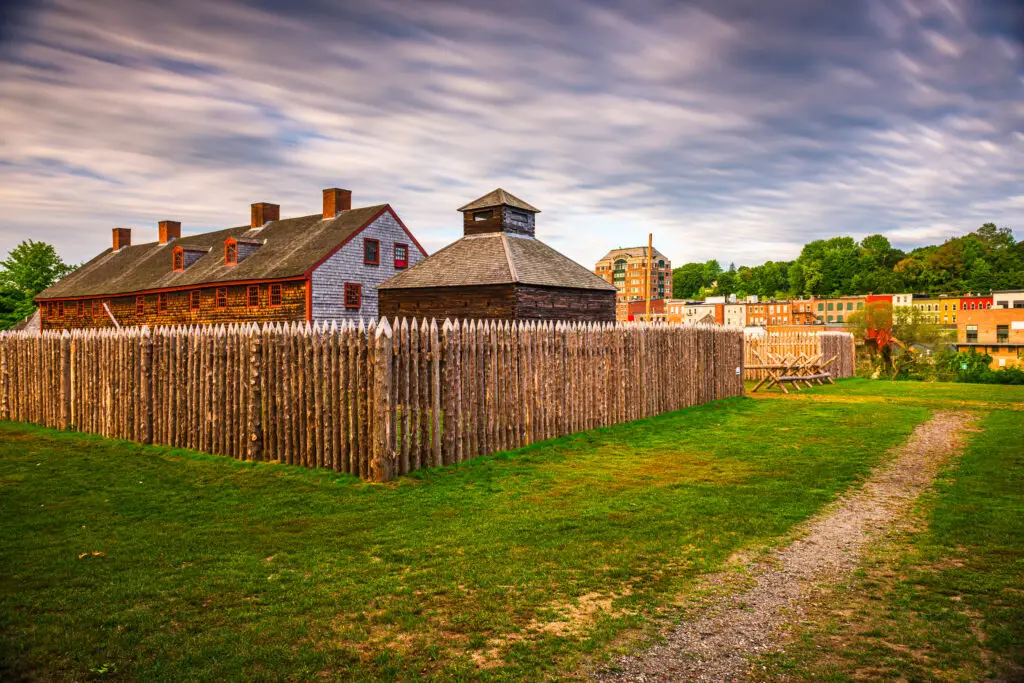
Understanding the Maine Climate
Maine has a humid continental climate, which means that it has warm summers and cold winters. The state experiences four distinct seasons: spring, summer, fall, and winter. Understanding the climate of Maine is important when it comes to planting grass seed.
During the summer months, Maine experiences warm temperatures with an average high of around 80°F (27°C) in July. However, temperatures can sometimes reach as high as 90°F (32°C) during heatwaves.
The summer months also bring frequent thunderstorms, which can cause soil erosion and runoff. Therefore, it is recommended to stabilize the soil by planting grass seed before hard winter rains.
In the fall, the temperatures start to cool down, and the days become shorter. The best time to plant grass seed in Maine is in late summer or early fall (mid-August to mid-September).
The soil is warm, temperatures are cooler, autumn rains are more plentiful, and weeds are less active. This creates an excellent environment for seed germination before leaves start falling and winter cold arrives.
Winter in Maine is long and cold, with temperatures often dropping below freezing. Snow is common, and the state receives an average of 60 inches (152 cm) of snowfall per year. Planting grass seed in winter is not recommended due to the cold temperatures and snow cover.
Spring in Maine is a time of transition from winter to summer. The temperatures start to warm up, and the snow starts to melt. However, the ground is often still too cold and wet for planting grass seed. It is recommended to wait until late summer or early fall to plant grass seed in Maine.
Choosing the Right Grass Seed
When choosing the right grass seed for Maine, it is important to consider the climate and soil conditions. Maine has a cold climate with harsh winters and mild summers, which means that cool-season grasses are the best choice.
Cool-season grasses grow best in temperatures between 60 and 75 degrees Fahrenheit and are able to withstand the cold winters. Warm-season grasses, on the other hand, grow best in temperatures between 80 and 95 degrees Fahrenheit and are not suitable for Maine’s climate.
Kentucky bluegrass is a popular choice for Maine lawns as it is a cool-season grass that is able to withstand the cold winters. It is known for its fine texture, dark green color, and ability to self-repair. Ryegrass is another cool-season grass that is commonly used in Maine. It is known for its quick germination and ability to establish a lawn quickly.
Fine fescue is a great seed choice for Maine because of its fine texture and tolerance for acidity and infertile soils. It is able to survive in full sun and shade, making it a versatile choice for many lawns.
Tall fescue is another cool-season grass that is able to tolerate a wide range of soil conditions and is known for its deep roots and drought resistance.
Bermuda grass, zoysia grass, St. Augustine grass, centipede grass, and bahia grass are all warm-season grasses that are not suitable for Maine’s climate. It is important to choose a grass seed that is adapted to the local climate and soil conditions in order to ensure a healthy and vibrant lawn.
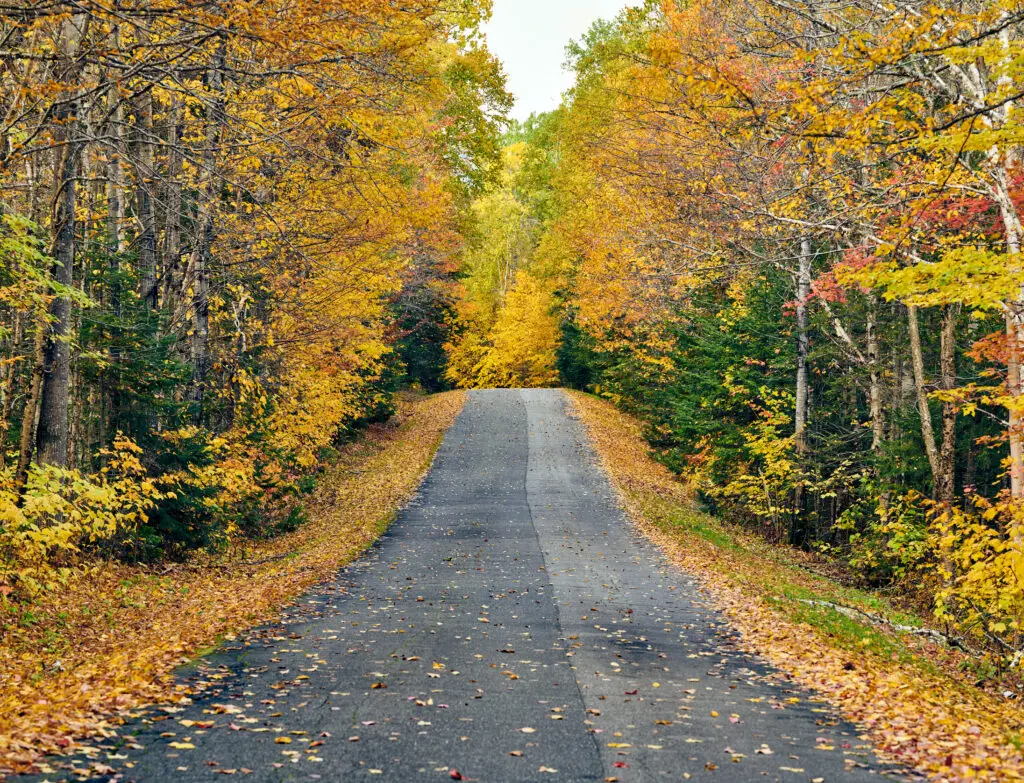
Ideal Planting Time for Grass Seed in Maine
The best time to plant grass seed in Maine is during late summer and early fall, specifically between mid-August and mid-September. During this time, the soil is still warm, but the temperatures are cooler, which creates an excellent environment for seed germination.
Additionally, autumn rains are more plentiful, and weeds are less active, which helps to prevent competition for the new seedlings.
According to the University of Maine Cooperative Extension, the warm soil during this time allows seeds to germinate quickly, and the cool nights are ideal for strong seedling growth. Late summer is also an ideal time to plant grass seed because there is less weed competition than in the spring.
If you’re planning on planting grass seed in southern Maine, you can do so throughout the whole month of September. However, it’s important to stabilize the soil to prevent erosion and runoff before hard winter rains. If you live near the coast, lake, or river, be careful with fertilizers since they can be a significant source of pollutants.
Late spring seeding can also result in an excellent lawn if weeds are not an issue on your site. However, summer seeding can yield a high-quality lawn, but you must irrigate frequently to prevent the seed from drying out. Summer weeds can also quickly take over, so it’s important to keep an eye on them.
Preparing the Soil for Planting
Preparing the soil is an essential step in planting grass seed in Maine. The soil must be free of debris, rocks, and other obstructions that can hinder seed growth. It is recommended to rake the soil to remove any sticks, debris, and old grass, as the old grass can poison the roots of new grass seed.
A tiller can be used to add in some nutrients and organic matter to the soil.
Soil testing is also crucial in determining the soil’s pH level and nutrient content. A soil test can identify any deficiencies and help determine the appropriate amount of fertilizer to add to the soil. It is recommended to test the soil at least once a year to ensure optimal growth.
Aeration is another soil preparation technique that can help improve soil drainage and reduce soil compaction. Aerating the soil involves perforating the soil with small holes to allow air, water, and nutrients to penetrate deeper into the soil. This can be done using a manual or motorized aerator.
Leveling the soil is also important to ensure a uniform and level surface for planting. Uneven surfaces can cause water to pool in certain areas and create drainage issues. A leveling rake or a lawn roller can be used to level the soil.
Finally, soil temperatures and fertility must be considered when preparing the soil for planting. The best time to plant grass seed in Maine is in late summer/early fall (mid-August to mid-September) when the soil is warm, temperatures are cooler, and autumn rains are more plentiful.
It is also important to ensure that the soil is fertile enough to support grass growth. Adding fertilizer to the soil can help improve soil fertility and promote healthy grass growth.
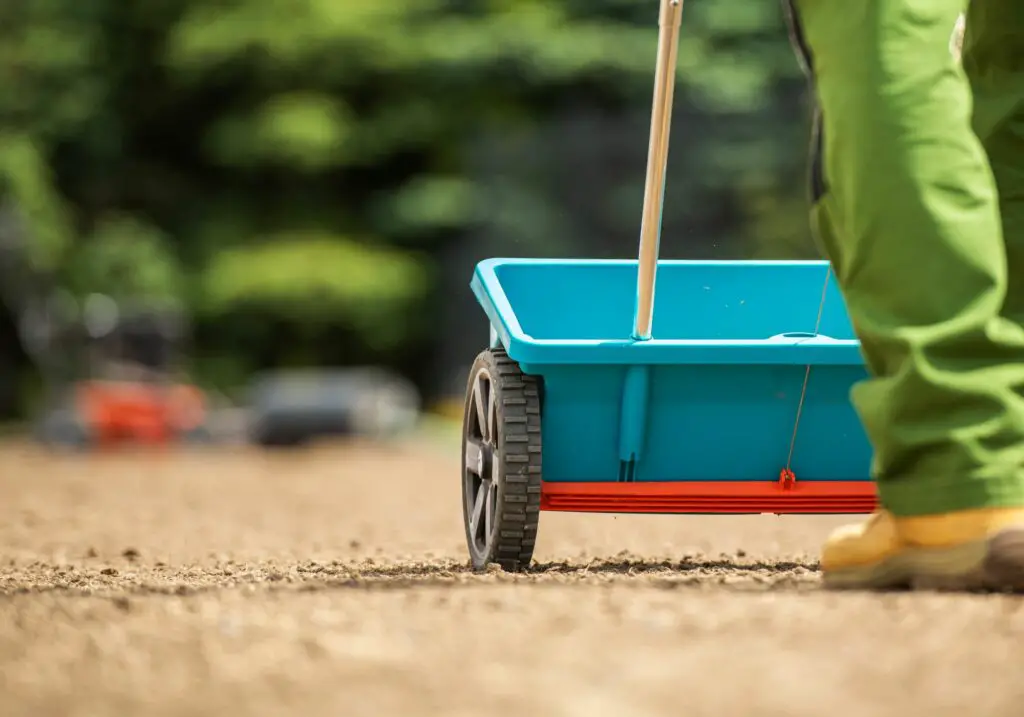
Planting the Grass Seed
Once the soil has been prepared, it’s time to plant the grass seed. The most common method for planting grass seed is by using a spreader. This ensures that the seed is distributed evenly across the lawn.
It’s important to choose the right spreader for the job. A drop spreader is best for smaller lawns, while a broadcast spreader is better for larger lawns.
Before planting the grass seed, it’s important to determine the seeding rate. This will vary depending on the type of grass being planted.
For example, fine fescue grass seed requires a seeding rate of 4-5 pounds per 1,000 square feet, while Kentucky bluegrass seed requires a seeding rate of 2-3 pounds per 1,000 square feet. It’s important to follow the manufacturer’s instructions for seeding rate to ensure proper growth and coverage.
When seeding, it’s important to pay special attention to any bare spots in the lawn. These areas may require additional seed to ensure proper coverage. It’s best to seed these areas by hand to ensure that the seed is distributed evenly.
After the seed has been spread, it’s important to water the lawn thoroughly. This will help the seed to germinate and establish a strong root system. It’s important to keep the soil moist until the grass is established. This may require watering the lawn several times a day for the first few weeks.
Caring for the Newly Planted Lawn
After planting grass seed in Maine, it is important to care for the newly planted lawn to ensure its healthy growth. Here are some tips for caring for a newly planted lawn:
Watering
Watering is crucial for the growth of the newly planted grass. The top inch of soil should be kept consistently moist but not soggy. This means misting it with water once a day, usually in the morning and again at midday, if needed. If the weather is hot and dry, you will need to mist with water more frequently.
Straw
Covering the newly planted grass with straw can help keep the soil moist and cool, which is important for the growth of the grass. Straw also helps to prevent erosion and protect the grass from birds that may try to eat the seed.
Mowing
It is important to avoid mowing the newly planted grass until it has reached a height of at least 3 inches. When it is time to mow, make sure the blades are sharp and set at a height of 2 to 3 inches. Mowing too short can damage the grass and make it more susceptible to disease.
Fertilizer
Fertilizing the newly planted grass can help it grow faster and healthier. However, it is important to wait until the grass has been mowed at least three times before applying any fertilizer. This allows the grass to establish a strong root system before being exposed to the chemicals in the fertilizer.
Maintenance
Maintaining the newly planted grass involves regular watering, mowing, and fertilizing. It is also important to remove any weeds that may appear in the lawn. Weeds can compete with the grass for nutrients and water, and can also make the lawn look unsightly.
Pest and Disease Control
Pests and diseases can be a problem for newly planted grass. Keeping the lawn healthy by watering, mowing, and fertilizing regularly can help prevent pests and diseases. If pests or diseases do appear, it is important to identify the problem and take appropriate action to control it.
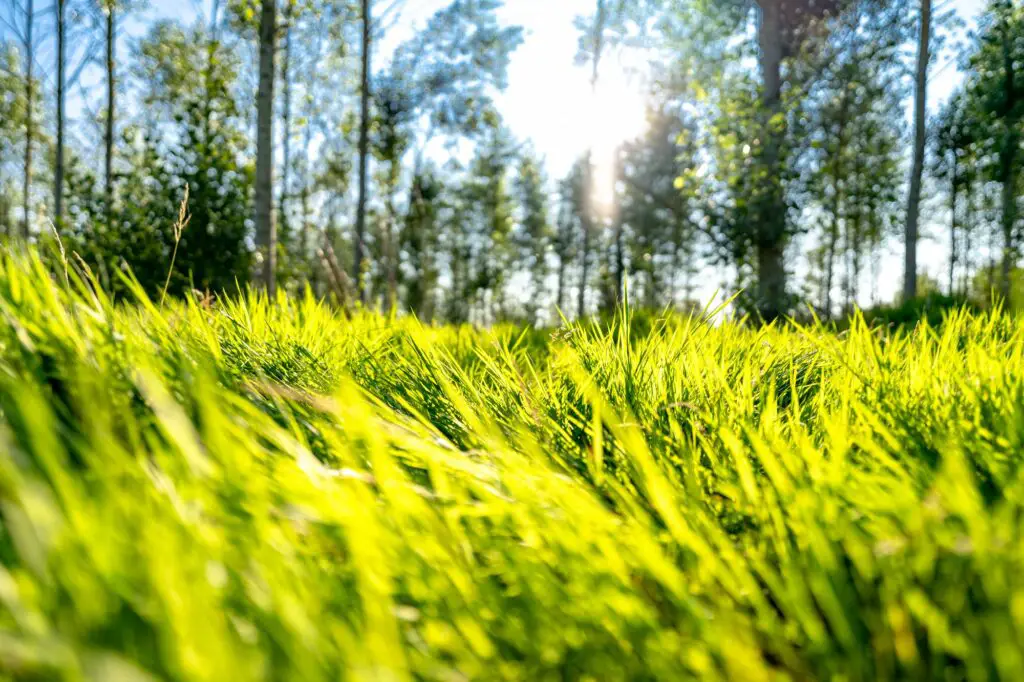
Understanding Grass Seed Germination
Grass seed germination is the process of a seed sprouting and growing into a new plant. It is an important step in establishing a healthy lawn. Understanding the process of grass seed germination can help gardeners achieve better results when planting grass seed.
The process of grass seed germination involves several stages. The first stage is the absorption of water by the seed. Water is essential for the seed to activate enzymes that break down stored food reserves.
The second stage is the emergence of the radicle, which is the first root of the seedling. The third stage is the emergence of the shoot, which is the first leaf of the seedling. Finally, the fourth stage is the development of the seedling into a mature plant.
Several factors can affect grass seed germination. The most important factor is soil temperature. Grass seed germinates best when soil temperatures are between 60 and 75 degrees Fahrenheit. Other factors that can affect grass seed germination include soil moisture, soil pH, and soil fertility.
To achieve optimal grass seed germination, gardeners should prepare the soil properly. Soil should be tilled to a depth of 6 to 8 inches and amended with organic matter. The soil should be level and free of debris.
Gardeners should also choose the right grass seed for their location and soil type. In Maine, fine fescue is a great seed choice because of its fine texture and tolerance for acidity and infertile soils.
Maintaining a Healthy Lawn in Maine
Maintaining a healthy lawn in Maine requires a bit of effort but can result in a lush, green lawn with a strong root system and minimal weeds. Here are some tips to help keep your lawn healthy:
1. Mowing
Mowing is an essential part of maintaining a healthy lawn. It helps to promote growth, reduce thatch buildup, and prevent weed growth. When mowing, it is important to keep the blades sharp and adjust the height of the mower to the appropriate level for your grass type.
For most grasses, a height of 2.5 to 3 inches is ideal. Avoid cutting more than one-third of the grass blade at a time.
2. Watering
Watering is crucial for a healthy lawn, especially during dry spells. It is best to water deeply and infrequently rather than shallowly and frequently. This encourages deeper root growth, which helps the grass to be more drought-resistant.
Watering early in the morning is also recommended, as it allows the grass to dry before nighttime, reducing the risk of disease.
3. Fertilizing
Fertilizing can help to promote healthy growth and a lush, green lawn. It is best to fertilize in the fall and spring when the grass is actively growing. Avoid over-fertilizing, as this can lead to excessive growth and thatch buildup. It is also important to choose a fertilizer that is appropriate for your grass type.
4. Overseeding
Overseeding can help to renew a lawn and fill in bare spots. It is best to overseed in the fall when the soil is warm and there is plenty of moisture. This allows the seeds to germinate and establish before winter sets in. Be sure to choose a grass seed that is appropriate for your lawn’s conditions, such as full sun, partial shade, or shade.

Dealing with Specific Maine Conditions
Maine’s environment and growing conditions can vary significantly depending on the location. The state has a humid continental climate, which means that it experiences four distinct seasons.
However, the coastal areas tend to have milder winters and cooler summers than inland regions. When planting grass seed in Maine, it is essential to take into account the specific conditions of the location.
During hot weather, it is crucial to keep the soil moist to ensure successful seed germination. If the soil dries out, the seeds will not germinate, and the new grass will not grow.
It is recommended to water the area lightly once or twice a day until the seeds germinate. After germination, water the area deeply and less frequently to encourage the roots to grow deep into the soil.
Air temperatures and warm soils are essential for successful grass seed germination. The best time to plant grass seed in Maine is from mid-August to mid-September when the warm soil allows seeds to germinate quickly.
Late summer’s warm days and cool nights are ideal for strong seedling growth. It is essential to plant the seeds early enough to allow them to establish a strong root system before the winter cold arrives.
The surface of the soil should be prepared before planting the grass seed. The soil should be loosened to a depth of 6-8 inches to allow the roots to penetrate easily. It is also recommended to add organic matter to the soil to improve its texture and fertility.
A soil test can be conducted to determine the soil’s pH level and nutrient content, which can help determine the best fertilizer to use.
Frequently Asked Questions
What are the best months to plant grass seed in Maine?
According to Jonathan Green, the best time to plant grass seed in Maine is in late summer/early fall, from mid-August to mid-September. The soil is warm, temperatures are cooler, autumn rains are more plentiful, and weeds are less active during this period. This creates an excellent environment for seed germination before leaves start falling and winter cold arrives.
What is the latest I can plant grass seed in Maine?
As per the University of Maine Cooperative Extension, the latest time to plant grass seed in Maine is late summer, between August 15 and September 15. Planting later than this may not allow the seed to germinate and establish a strong root system before winter arrives.
What type of grass seed is recommended for Maine?
Kentucky Bluegrass, Perennial Ryegrass, and Fine Fescue are the most recommended grass seed types for Maine. These grasses are well adapted to the state’s climate and soil conditions. Kentucky Bluegrass is known for its lush, green appearance and is commonly used for home lawns. Perennial Ryegrass is drought-tolerant and ideal for high-traffic areas, while Fine Fescue is shade-tolerant and suitable for areas with less sunlight.
Can grass seed be planted in the fall in Maine?
Yes, fall is the best time to plant grass seed in Maine. As mentioned earlier, late summer to early fall is the ideal period to plant grass seed in Maine. The soil is warm, and the temperatures are cooler, which creates an excellent environment for seed germination.
Are there any lawn alternatives for Maine?
Yes, there are many lawn alternatives for Maine. Some of the popular alternatives include clover, moss, and groundcovers such as creeping thyme, sedum, and creeping phlox. These alternatives are drought-tolerant, require less maintenance, and are environmentally friendly.
Where can I find Kentucky Bluegrass Seed in Maine?
Kentucky Bluegrass seed is available at most garden centers, nurseries, and home improvement stores in Maine. Some of the popular stores include Lowe’s, Home Depot, and Ace Hardware. Additionally, there are many online retailers that offer Kentucky Bluegrass seed, such as Amazon and Seedland.

Hey, I’m Lisa and I’ve been an avid gardener for over 30 years. I love writing, talking and living in the garden! Feel free to connect with me on my socials below

